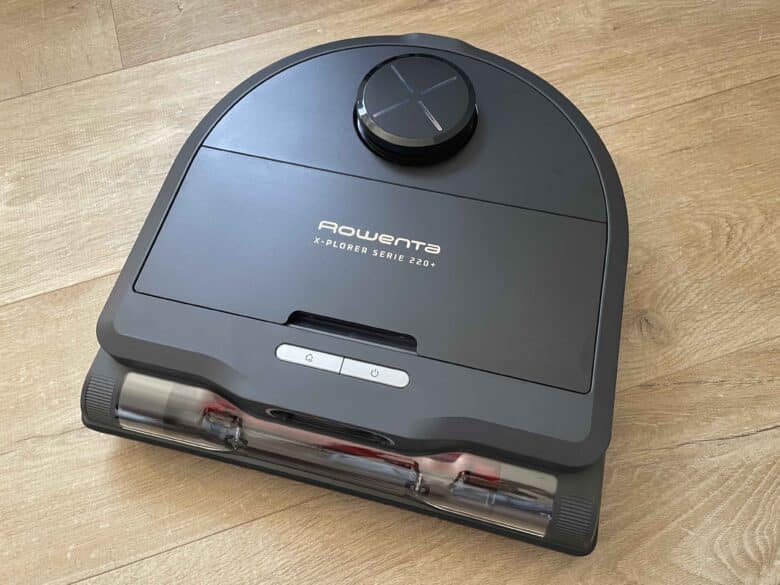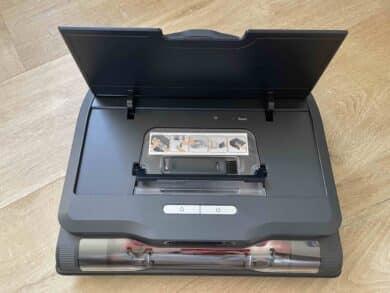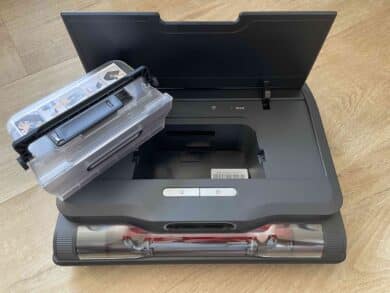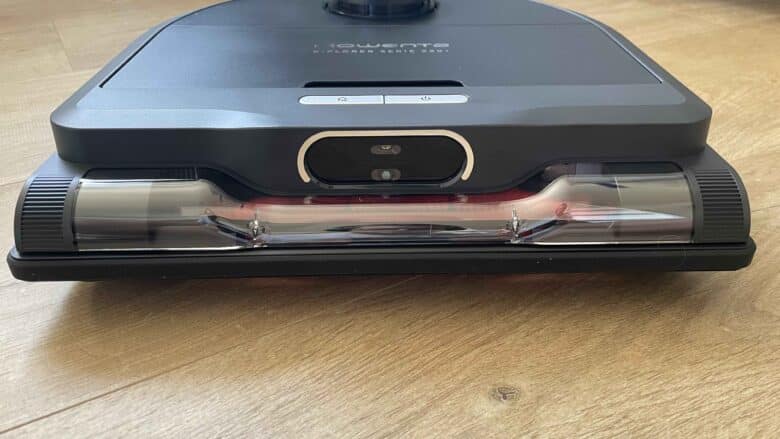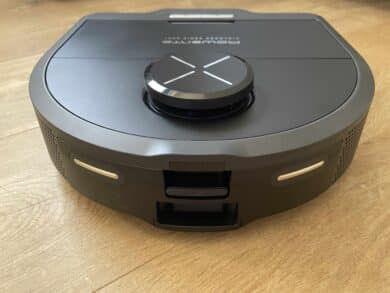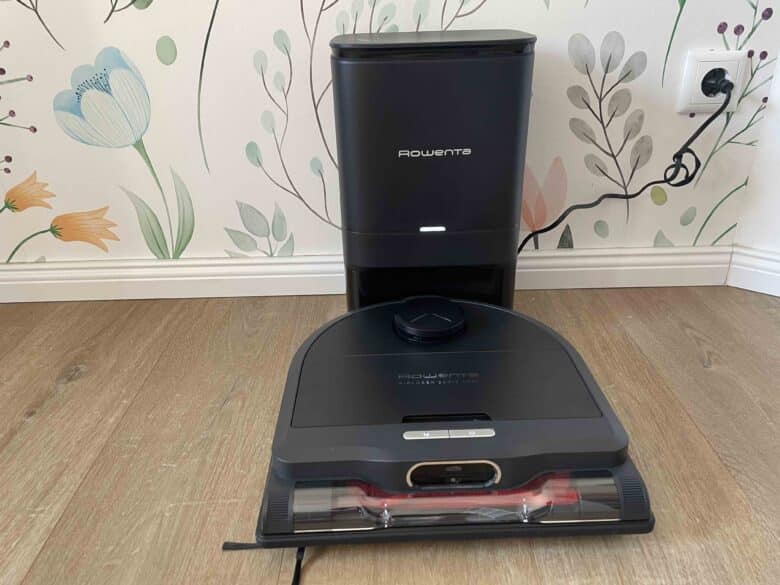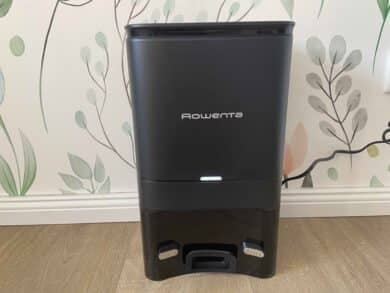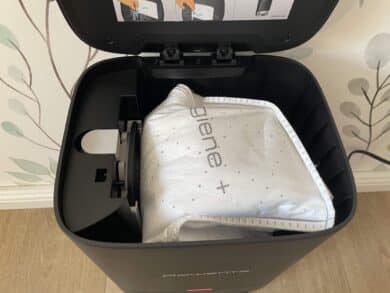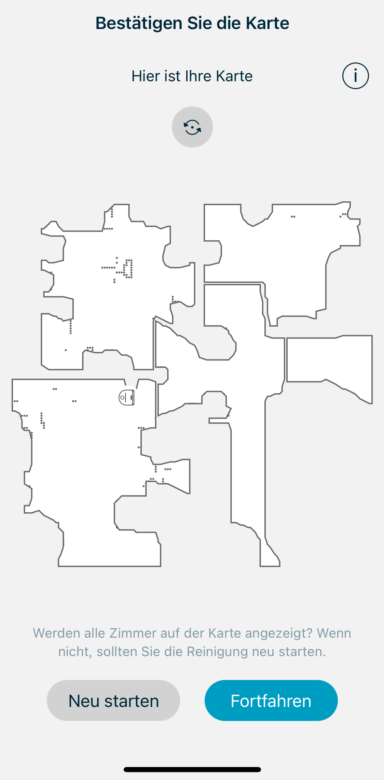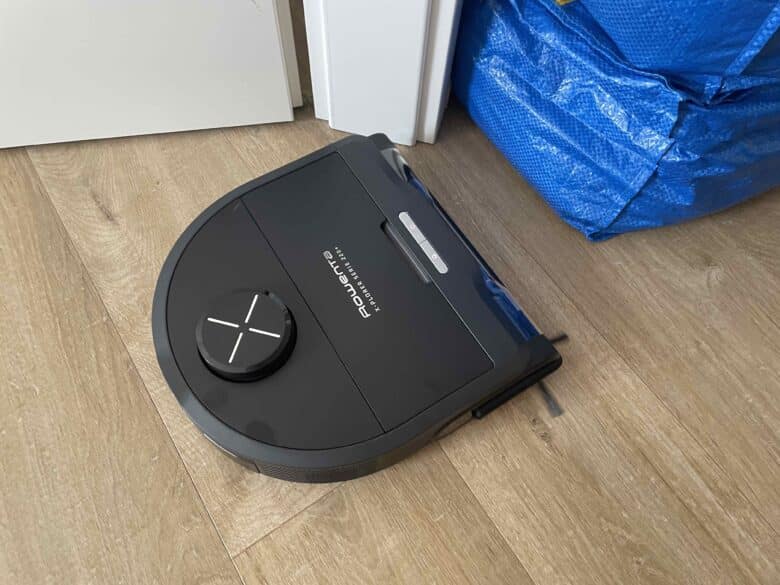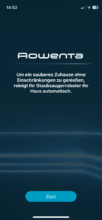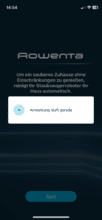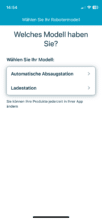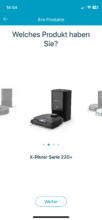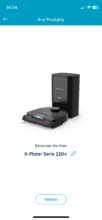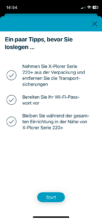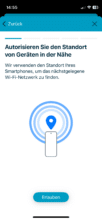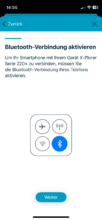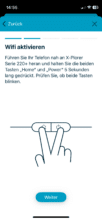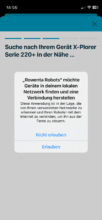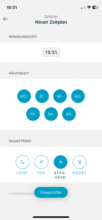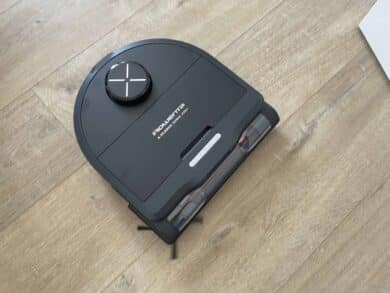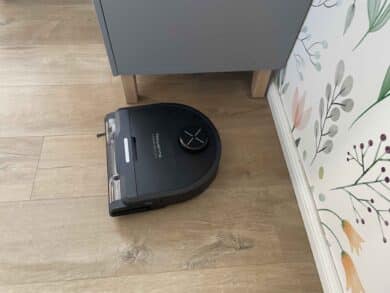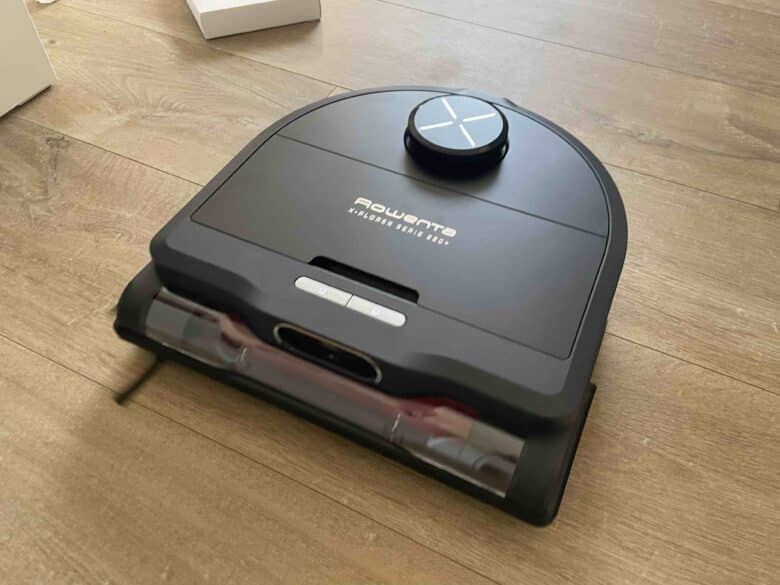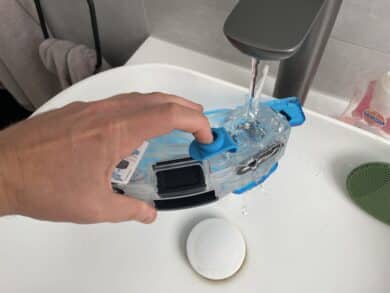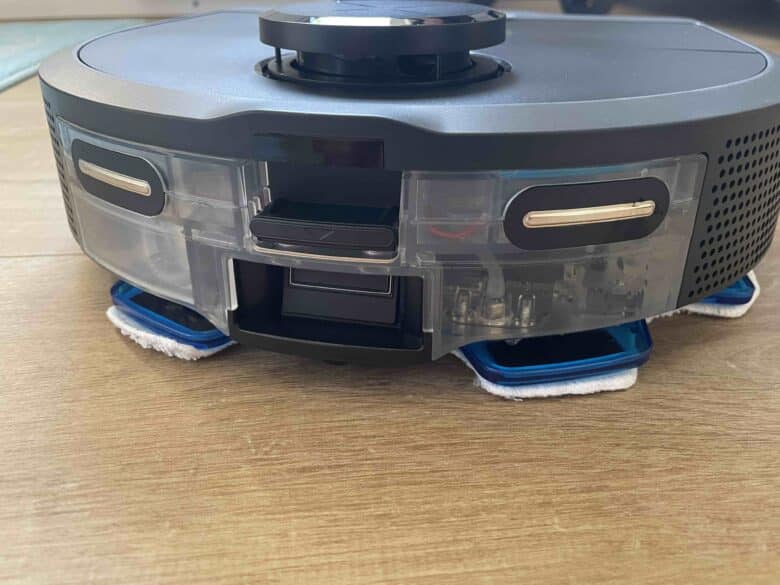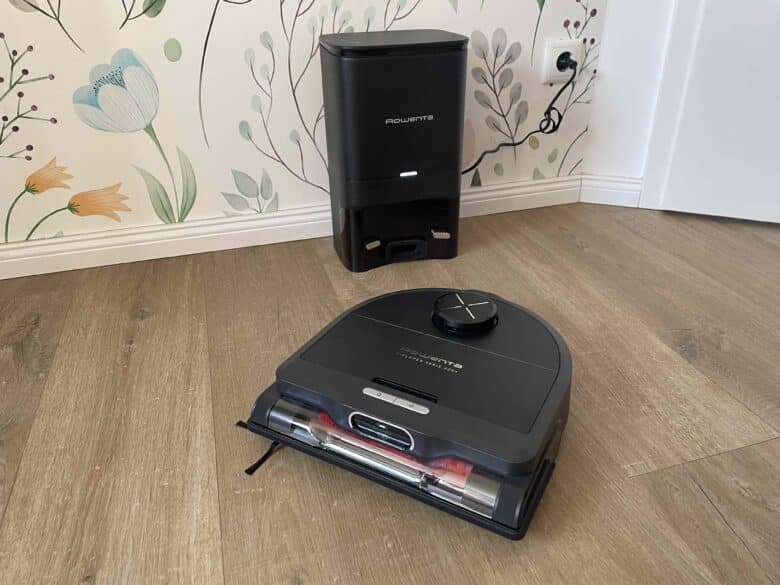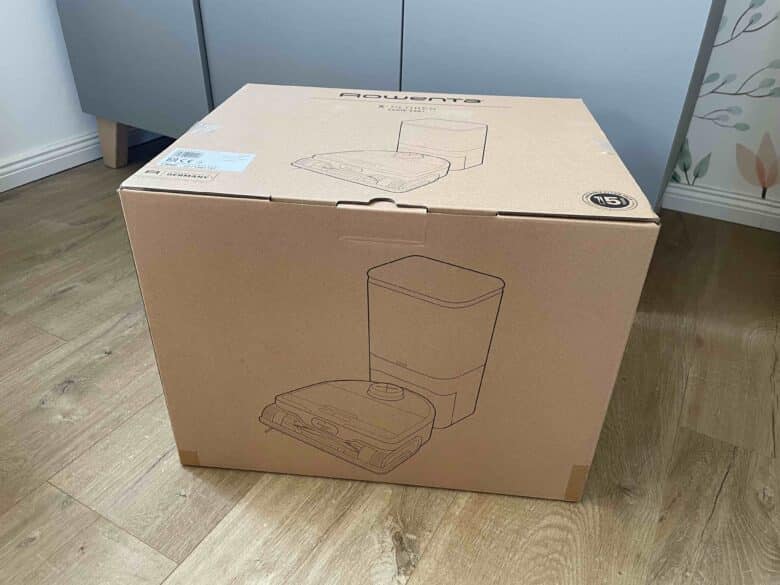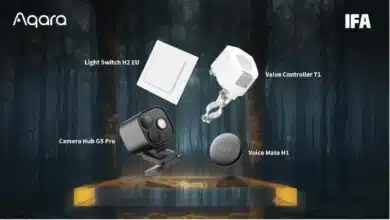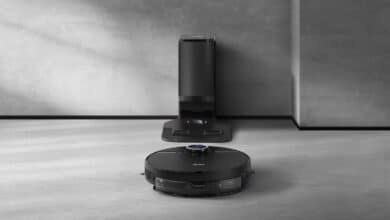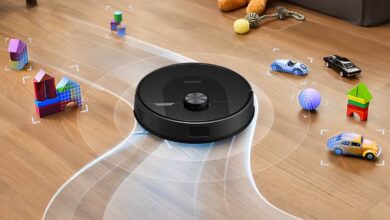
Former big players, which only a few years ago accounted for the majority of vacuum cleaners in German households, now only play second fiddle in the field of robot vacuum cleaners. Instead, brands such as Roborock, Dreame and Ecovacs are much better known and more successful. The best example is Rowenta. The traditional company is still celebrating great success today when it comes to selling vacuum cleaners. Rowenta, on the other hand, is not yet very well known for robotic vacuum cleaners. The company wants this to change. In the Rowenta X-plorer Series 220+ test, we take a look at a robot vacuum cleaner that comes with a practical suction station and an unusual form factor.
Technical data
| Model | Rowenta X-plorer series 220+ |
| Suction power | Up to 5600 Pascal |
| Wiping function | Yes, vibrating wiping pad |
| Suction station | Yes, bag lasts up to 60 days |
| Navigation | LiDAR |
| Obstacle detection | Optical sensor + LED |
| App | Yes, Rowenta Robots |
| Rechargeable battery | – Up to 120 minutes – 4 hours charging time |
| The price | RRP: 999.99 euros (price on Amazon: € 599.99 *) |
Scope of delivery
Rowenta X-plorer Series 220+ test: design and workmanship
In recent years, the majority of robot vacuum cleaner manufacturers have agreed on a common design language. Most brands now rely on circular appliances. However, it is well known that exceptions prove the rule. Rowenta, for example, has taken a completely different approach with its X-plorer 220+ series and has opted for a D-shape.
Rowenta goes one step further than the similarly shaped Eufy Omni S1 Pro (review). With the help of the two right-angled corners at the front, the manufacturer promises optimum corner cleaning. There are two elongated buttons in silver color on the top in the front area. These enable rudimentary control. One button can be used to start and pause the device.
The home button sends the smart household helper back home to its base. In the center is not only the Rowenta brand logo and model name. There is also a maintenance flap here, which you can use to access the dust chamber. The LiDAR tower, which houses the vacuum cleaner’s navigation technology, is located at the rear of the robot vacuum cleaner.
At the front of the X-plorer, you can see the obstacle detection technology. The red main brush of the smart household helper can also be seen. This is also rather atypical. After all, with the majority of robot hoovers, you can only see the main brush from the underside. In the end, the view of the underside of the X-plorer was all the more exciting.
This is where the mop, two large and well-profiled wheels and the suspension for the main brush are located. The Rowenta X-plorer Series 220+ has a good build quality and a matt black housing made of high-quality plastic.
Rowenta X-plorer Series 220+ test: Suitable suction station
Experts in the field of robot vacuum cleaners will know that a plus sign in the name usually indicates a suction station. And this is also the case with the X-plorer from Rowenta. The manufacturer provides its smart household helper with a round station whose black plastic housing harmonizes perfectly with the look of the robot vacuum. With a height of 38 cm, it is not too high, allowing it to be placed quite inconspicuously in the home.
Together with the robot hoover, the cleaning system is 32.5 cm wide, 38 cm high and 51.7 cm deep. In addition to the brand logo, there is a small status LED on the front of the station, which signals processes such as charging the robot. The lid on the top provides access to the dust bag inside. Unfortunately, Rowenta does not use a bagless system either. The closed system may please allergy sufferers, but it inevitably leads to follow-up costs and unnecessary waste.
According to the manufacturer, a bag should last up to 60 days, which is why the suction station needs at least six bags a year. This is a pity, but should not be too harsh a criticism. After all, the vast majority of robot hoovers with a suction station still rely on bags. I also find the fixed power cable somewhat annoying. This makes it impossible for the user to attach a longer power cable, which is why there is no way around an extension cable if the socket is a long way away.
Rowenta X-plorer Series 220+ test: Navigation and obstacle detection
The X-plorer relies on LiDAR sensors for navigation. It is not without reason that the vast majority of robot vacuums rely on navigation technology. After all, laser technology not only enables fast mapping. The system also scores highly in terms of accuracy. Even in complete darkness.
The result can then be viewed and edited in the Rowenta app. However, the X-plorer definitely comes out on top in a direct comparison with well-known competitors. Flagship-class vacuum robots such as the Dreame L20 Ultra (review) create much more detailed maps.
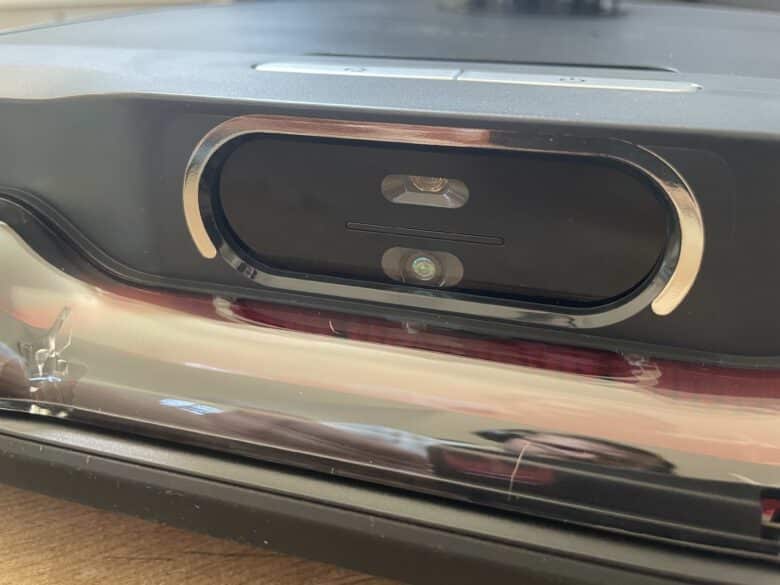
For the average user, the results of the Rowenta model should be sufficient, but given the price, I was hoping for a little more detail. The robot’s obstacle detection performed quite well in the test. Collisions with objects were rare.
According to the manufacturer, the robot hoover can even detect and successfully avoid small objects from a height of just two centimetres. This did not seem to apply to my USB cable, which measures almost exactly two centimetres.
I don’t want to be too harsh here, but when a manufacturer promises accuracy in this discipline and also emphasizes that you don’t even have to clean up for cleaning processes, this is a major focus. If you want to experience pioneering obstacle detection and avoidance, you should take a look at the Narwal Freo Z Ultra (review).
Rowenta X-plorer Series 220+ Test: Rowenta App
Rowenta naturally also provides a suitable app for its smart household helper. In the test, this primarily impressed with its clear layout. Especially newcomers without much experience in the field of robot vacuums will quickly find their way around.
Experts, on the other hand, who like to customize every little detail of the smart household helper, might be bothered by the comparatively limited setting options. Personally, this didn’t bother me. You can customize the map, create cleaning schedules and adjust the suction and mopping power to suit your needs.
The only thing I would have liked to see is a separate mode for mapping. As the initial mapping can only be combined with cleaning, it takes a correspondingly long time. The Rowenta app leaves a positive impression and scores points with a great overview and uncomplicated operation, which should appeal to non-professionals in particular. This applies not only to the general operation, but also to the set-up, which is quickly completed thanks to clear step-by-step instructions.
Rowenta X-plorer 220+ series test: Good vacuum cleaner for hard floors
The supreme discipline for robot vacuums is, of course, cleaning performance. If the smart household helper can’t vacuum and mop floors and carpets properly, even a clear app and great navigation won’t help. Let’s first take a look at the technical data.
With a maximum suction power of 5600 Pascal, the Robo seems a little out of date. After all, even mid-range devices such as the JONR P20 Pro (review) now offer 8000 Pascal and more. And the JONR costs significantly less than the Rowenta.
But the important thing, of course, is how the Rowenta can transfer its suction power to the floor. And to be honest, there’s not much to complain about here. It scores particularly well on hard floors with great suction power. Here it benefits from the pleasingly wide main brush.
In combination with the side brush and the D-shaped design, it also enables good corner cleaning. I would not have expected this beforehand. What was to be expected, however, is the only satisfactory performance on carpets. Here, the Rowenta simply lacks a few pascals to remove even the deepest dirt from long-fiber carpeting.
However, if you mainly have hard floors such as parquet, laminate, tiles or vinyl anyway, you will get a good clean here. Even though I like the wide design of the main brush, the material is not quite as satisfying. Hair tends to get tangled up in the bristles, which pet owners should bear in mind.
Rowenta X-plorer 220+ series test: Wiping performance only satisfactory
Nowadays, there are hardly any robotic vacuum cleaners that can only vacuum. A mopping function is now also on board as standard. This is also the case with the Rowenta X-plorer. However, unlike most of the competition, Rowenta does not use rotating mops.
Instead, a mopping surface is used that vibrates in a similar way to a Roborock S8 Pro Ultra (review) and thus simulates a mopping movement. I wasn’t really convinced by the result. Although the cloth reliably wipes up light dust residues, the vibrating wiping cloth generally loses out when it comes to stubborn stains.
However, if you don’t attach great importance to a wiping function, you can simply remove the cloth and water tank. I would recommend this to anyone who has a carpet in their home. After all, the X-plorer unfortunately cannot lift the mopping surface.
Rowenta X-plorer 220+ series test: 120 minutes battery life
The X-plorer is anything but a marathon runner. According to the manufacturer, the smart household helper can last up to 120 minutes. It won’t be setting any new records, but that should be more than enough for the average user. And if the battery runs out during the cleaning process, it’s no problem at all. The Rowenta then simply returns to the charging station and fully recharges the battery. It then continues cleaning where it left off last. A full charge takes 4 hours.
Conclusion
The Rowenta X-plorer 220+ series is a solid robot vacuum with strengths and weaknesses. The distinctive D-shaped design, which enables better cleaning in corners, which is often problematic with round models, is a positive feature. The build quality is impressive and the appliance appears robust. Thanks to the included suction station, there is no need to manually empty the dust container, which is particularly pleasing for allergy sufferers.
Navigation is performed by tried-and-tested LiDAR sensors, which create fast and precise maps. Nevertheless, the X-plorer lags behind the competition, such as Dreame or Roborock, as the maps created are less detailed. The obstacle detection works quite reliably, but tends to overlook smaller objects. The clear Rowenta app offers ease of use for beginners. In terms of cleaning performance, the X-plorer delivers solid results on hard floors, where it also does a good job in the corners.
On carpets, however, the suction power is somewhat weak at a maximum of 5600 Pascal, meaning that deeper-lying dirt on long-fibered carpets is only insufficiently removed. The mopping function, on the other hand, did not convince us as it does not remove stubborn stains sufficiently. Overall, the Rowenta X-plorer Series 220+ is a useful household helper for hard floors, but it shows weaknesses when it comes to carpets and mopping performance. The high price is somewhat difficult to justify in view of the competition. A Dreame L10s Pro Ultra Heat (review), for example, offers significantly more for the money.
Rowenta X-plorer Series 220+
Design & processing
Ease of use
Cleaning performance
Equipment
Price-performance ratio
86/100
The Rowenta X-plorer Series 220+ offers solid performance, but is simply too expensive for what it offers.


